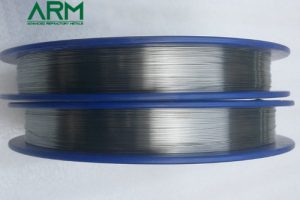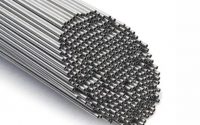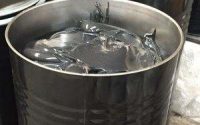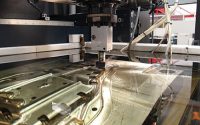Molybdenum Spray Wire: Features, Uses, and Benefits
Introduction
Molybdenum spray wire is a high-performance material widely used in thermal spray coating applications across several industries. This wire, typically made of pure molybdenum or molybdenum alloys, is favored for its excellent adhesion, wear resistance, and corrosion resistance when applied as a coating. Its unique properties make it ideal for enhancing the lifespan and performance of metal parts in demanding environments, such as automotive, aerospace, and industrial machinery.

This article discusses the characteristics, applications, and advantages of molybdenum spray wire.
1. What is Molybdenum Spray Wire?
Molybdenum spray wire is specifically designed for thermal spray coating processes, in which the wire is melted and sprayed onto a surface to form a durable coating. The wire is heated by an electric arc or combustion flame, and the molten material is atomized and propelled onto the substrate, forming a protective coating as it solidifies.
The wire is typically made from high-purity molybdenum, an element known for its excellent resistance to heat, wear, and corrosion. Molybdenum’s melting point is 2,623°C, making it ideal for applications where durability under high temperatures and extreme wear conditions is critical.
Further reading: Types and Uses of Molybdenum Wire
2. Properties of Molybdenum Spray Wire
– High Melting Point: Molybdenum has a melting point of 2,623°C, allowing it to maintain integrity in high-temperature environments.
– Wear and Corrosion Resistance: Molybdenum coatings are extremely resistant to wear and corrosion, providing excellent surface protection for substrates exposed to harsh conditions.
– Strong Adhesion: When applied using thermal spray processes, molybdenum spray wire forms coatings that bond well with metal surfaces, enhancing their resistance to peeling and abrasion.
– Thermal and Electrical Conductivity: Molybdenum offers good conductivity, which is beneficial in applications where heat or electrical conductivity is required.
3. Applications of Molybdenum Spray Wire
Molybdenum spray wire is used in various industries to provide wear resistance, corrosion protection, and improved surface properties to metal components. Some of the key applications include:
– Automotive Industry: One of the most common uses of molybdenum spray wire is in the automotive industry, particularly for coating piston rings, synchronizer rings, and gear parts. The molybdenum coating enhances wear resistance and provides lubricity, which helps reduce friction in engine components, extending the lifespan of these parts and improving fuel efficiency.
– Aerospace Components: In aerospace, molybdenum spray wire is used to coat parts that endure high temperatures and harsh environments. Components such as turbine blades, compressor parts, and landing gear benefit from molybdenum coatings, which enhance their durability and performance under extreme conditions.
– Industrial Machinery: Molybdenum-coated components are also prevalent in industrial machinery and equipment that face constant wear, such as pumps, valves, and rollers. The coating improves the surface hardness and wear resistance of these parts, reducing maintenance needs and extending their operational life.
4. Benefits of Molybdenum Spray Wire Coatings
– Enhanced Durability: Molybdenum coatings offer excellent resistance to wear and corrosion, making components more durable in harsh environments.
– Reduced Maintenance: By protecting surfaces from wear and corrosion, molybdenum coatings reduce maintenance requirements and downtime, saving costs over time.
– Improved Performance: Molybdenum-coated parts perform better under high-stress conditions due to the coating’s strong adhesion and resistance to degradation, making them ideal for automotive and aerospace applications.
– Thermal Stability: With a high melting point, molybdenum coatings maintain their properties even under high temperatures, adding value in applications like turbine engines and exhaust systems.
5. How Molybdenum Spray Wire Coating is Applied
Thermal spray coating with molybdenum wire is commonly performed using either an electric arc or flame spray process:
– Electric Arc Spraying: In this process, an electric arc melts the molybdenum wire, and compressed air propels the molten particles toward the substrate. This method is efficient for applying thick, durable coatings.
– Flame Spraying: In flame spraying, a combustible gas (typically acetylene) melts the wire. The molten material is then atomized and directed onto the surface. This process is versatile and can be used for coating a variety of materials and part geometries.
Both methods create strong, long-lasting coatings that adhere well to metal surfaces. The process choice depends on the specific application requirements and desired coating characteristics.
Advanced Refractory Metals (ARM) provides high-purity Molybdenum Spraying Wire for thermal spraying and other applications, delivering competitive pricing and superior quality. Customization is also available. Send us an inquiry if you are interested.
Conclusion
With high melting point, corrosion resistance, and excellent adhesion, molybdenum spray wire has become an ideal choice for thermal spray coatings. From enhancing the performance of automotive and aerospace parts to providing protective coatings for industrial machinery, molybdenum spray wire offers unmatched benefits. As industries continue to demand more resilient and efficient components, molybdenum spray wire coatings offer both economic and environmental benefits in the process.



